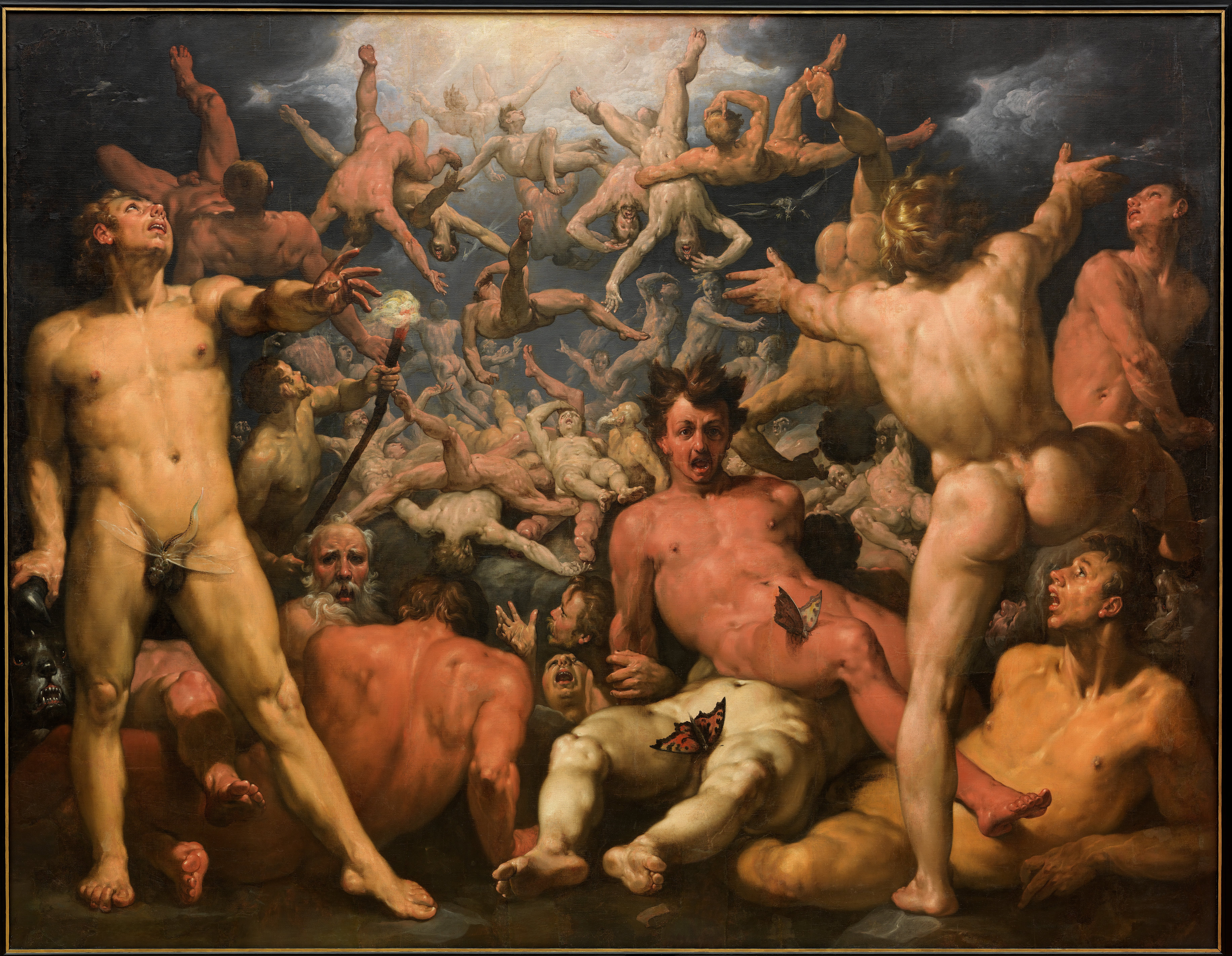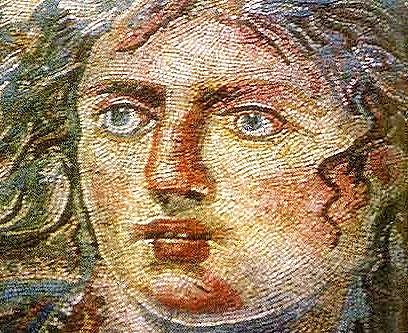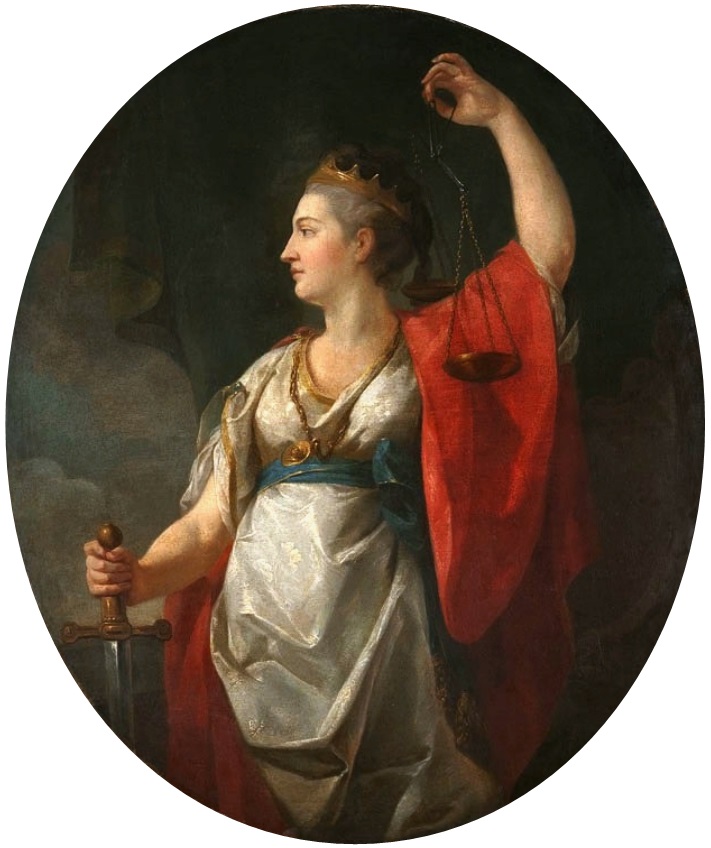|
Theia
Theia (; , also rendered Thea or Thia), also called Euryphaessa (, "wide-shining"), is one of the twelve Titans, the children of the earth goddess Gaia and the sky god Uranus in Greek mythology. She is the Greek goddess of sight and vision, and by extension the goddess who endowed gold, silver, and gems with their brilliance and intrinsic value. Her brother-consort is Hyperion, a Titan and god of the sun, and together they are the parents of Helios (the Sun), Selene (the Moon), and Eos (the Dawn). She seems to be the same figure as Aethra, who is the consort of Hyperion and mother of his children in some accounts. Like her husband, Theia features scarcely in myth, being mostly important for the children she bore, though she appears in some texts and rare traditions. Etymology The name ''Theia'' alone means simply "goddess" or "divine"; ''Theia Euryphaessa'' () brings overtones of extent (, ''eurys'', "wide", root: ) and brightness (, ''phaos'', "light", root: φαεσ-). ... [...More Info...] [...Related Items...] OR: [Wikipedia] [Google] [Baidu] |
Titans
In Greek mythology, the Titans ( ; ) were the pre-Twelve Olympians, Olympian gods. According to the ''Theogony'' of Hesiod, they were the twelve children of the primordial parents Uranus (mythology), Uranus (Sky) and Gaia (Earth). The six male Titans were Oceanus, Coeus, Crius, Hyperion (Titan), Hyperion, Iapetus, and Cronus; the six female Titans—called the Titanides () or Titanesses—were Theia, Rhea (mythology), Rhea, Themis, Mnemosyne, Phoebe (Titaness), Phoebe, and Tethys (mythology), Tethys. After Cronus mated with his older sister Rhea, she bore the first generation of Olympians: the six siblings Zeus, Hades, Poseidon, Hestia, Demeter, and Hera. Certain other descendants of the Titans, such as Prometheus, Atlas (mythology), Atlas, Helios, and Leto, are sometimes also called Titans. The Titans were the former gods: the generation of gods preceding the Twelve Olympians#Olympians, Olympians. They were overthrown as part of the Greek succession myth, which tells how Cron ... [...More Info...] [...Related Items...] OR: [Wikipedia] [Google] [Baidu] |
Oceanus
In Greek mythology, Oceanus ( ; , also , , or ) was a Titans, Titan son of Uranus (mythology), Uranus and Gaia, the husband of his sister the Titan Tethys (mythology), Tethys, and the father of the River gods (Greek mythology), river gods and the Oceanids, as well as being the great river which encircled the entire world. Etymology According to M. L. West, the etymology of Oceanus is "obscure" and "cannot be explained from Greek". The use by Pherecydes of Syros of the form () for the name lends support for the name being a loanword. However, according to West, no "very convincing" foreign models have been found. A Semitic derivation has been suggested by several scholars, while R. S. P. Beekes has suggested a loanword from the Aegean Pre-Greek non-Indo-European Stratum (linguistics), substrate. Nevertheless, Michael Janda sees possible Indo-European connections. Genealogy Oceanus was the eldest of the Titan offspring of Uranus (Sky) and Gaia (Earth). Hesiod lists his T ... [...More Info...] [...Related Items...] OR: [Wikipedia] [Google] [Baidu] |
Selene
In ancient Greek mythology and Ancient Greek religion, religion, Selene (; , meaning "Moon")''A Greek–English Lexicon's.v. σελήνη is the goddess and personification of the Moon. Also known as Mene (), she is traditionally the daughter of the Titans Hyperion (Titan), Hyperion and Theia, and sister of the Solar deity, sun god Helios and the Dawn deities, dawn goddess Eos. She drives her moon chariot across the heavens. Several lovers are attributed to her in various myths, including Zeus, Pan (god), Pan, and the mortal Endymion (mythology), Endymion. In post-classical times, Selene was often identified with Artemis, much as her brother, Helios, was identified with Apollo. Selene and Artemis were also associated with Hecate and all three were regarded as lunar deity, moon and lunar goddesses, but only Selene was regarded as the personification of the Moon itself. Her equivalent in Roman religion and mythology is the goddess Luna (goddess), Luna. Etymology and origins ... [...More Info...] [...Related Items...] OR: [Wikipedia] [Google] [Baidu] |
Hyperion (Titan)
In Greek mythology, Hyperion (; , 'he who goes before') was one of the twelve Titan children of Gaia (Earth) and Uranus (Sky). With his sister, the Titaness Theia, Hyperion fathered Helios (Sun), Selene (Moon) and Eos (Dawn). Hyperion was, along with his son Helios, a personification of the sun, with the two sometimes identified. John Keats's abandoned epic poem ''Hyperion'' is among the literary works that feature the figure. Etymology "Hyperion" means "he that walks on high" or simply "the god above", often joined with "Helios". There is a possible attestation of his name in Linear B (Mycenaean Greek) in the lacunose form '']pe-rjo- ' (Linear B: Knossos.html" ;"title=", found on the Knossos">KN E 842 tablet (reconstructed ''[upe-rjo-[ne]'') though it has been suggested that the name actually reads "Apollo" (''[a]-pe-rjo-[ne]''). Mythology Hyperion is one of the twelve or thirteen Titans, the children of Gaia and Uranus. In the ''Theogony'', Uranus imprisoned all the c ... [...More Info...] [...Related Items...] OR: [Wikipedia] [Google] [Baidu] |
Helios
In ancient Greek religion and Greek mythology, mythology, Helios (; ; Homeric Greek: ) is the god who personification, personifies the Sun. His name is also Latinized as Helius, and he is often given the epithets Hyperion ("the one above") and Phaethon ("the shining"). Helios is often depicted in art with a radiant crown and driving a horse-drawn chariot through the sky. He was a guardian of oaths and also the god of sight. Though Helios was a relatively minor deity in Classical Greece, his worship grew more prominent in late antiquity thanks to his identification with several major solar divinities of the Roman period, particularly Apollo and Sol (Roman mythology), Sol. The Roman Emperor Julian (emperor), Julian made Helios the central divinity of his short-lived revival of Religion in ancient Rome, traditional Roman religious practices in the 4th century AD. Helios figures prominently in several works of Greek mythology, poetry, and literature, in which he is often described ... [...More Info...] [...Related Items...] OR: [Wikipedia] [Google] [Baidu] |
List Of Greek Deities
In ancient Greece, deities were regarded as immortal, anthropomorphism, anthropomorphic, and powerful. They were conceived of as individual persons, rather than abstract concepts or notions, and were described as being similar to humans in appearance, albeit larger and more beautiful. The emotions and actions of deities were largely the same as those of humans; they frequently engaged in sexual activity, and were jealous and amoral. Deities were considered far more knowledgeable than humans, and it was believed that they conversed in a language of their own. Their immortality, the defining marker of their godhood, meant that they ceased aging after growing to a certain point. In place of blood, their veins flowed with ichor, a substance which was a product of their diet, and conferred upon them their immortality. Divine power allowed the gods to intervene in mortal affairs in various ways: they could cause natural events such as rain, wind, the growing of crops, or epidemics, and w ... [...More Info...] [...Related Items...] OR: [Wikipedia] [Google] [Baidu] |
Tethys (mythology)
In Greek mythology, Tethys (; ) was a Titans, Titan daughter of Uranus (mythology), Uranus and Gaia (mythology), Gaia, a sister and wife of the Titan Oceanus, and the mother of the River gods (Greek mythology), river gods and the Oceanids. Although Tethys had no active role in Greek mythology and no established cults, she was depicted in mosaics decorating baths, pools, and triclinium, triclinia in the Greek East, particularly in Antioch and its suburbs, either alone or with Oceanus. Genealogy Tethys was one of the Titan offspring of Uranus (Sky) and Gaia (Earth). Hesiod lists her Titan siblings as Oceanus, Coeus, Crius, Hyperion (mythology), Hyperion, Iapetus (mythology), Iapetus, Theia, Rhea (mythology), Rhea, Themis, Mnemosyne, Phoebe (Titaness), Phoebe, and Cronus. Tethys married her brother Oceanus, an enormous river encircling the world, and was by him the mother of numerous sons (the River gods (Greek mythology), river gods) and numerous daughters (the Oceanids). Accordi ... [...More Info...] [...Related Items...] OR: [Wikipedia] [Google] [Baidu] |
Earth Goddess
Earth is the third planet from the Sun and the only astronomical object known to Planetary habitability, harbor life. This is enabled by Earth being an ocean world, the only one in the Solar System sustaining liquid surface water. Almost all of Earth's water is contained in its global ocean, covering Water distribution on Earth, 70.8% of Earth's crust. The remaining 29.2% of Earth's crust is land, most of which is located in the form of continental landmasses within Earth's land hemisphere. Most of Earth's land is at least somewhat humid and covered by vegetation, while large Ice sheet, sheets of ice at Polar regions of Earth, Earth's polar polar desert, deserts retain more water than Earth's groundwater, lakes, rivers, and Water vapor#In Earth's atmosphere, atmospheric water combined. Earth's crust consists of slowly moving tectonic plates, which interact to produce mountain ranges, volcanoes, and earthquakes. Earth's outer core, Earth has a liquid outer core that generates a ... [...More Info...] [...Related Items...] OR: [Wikipedia] [Google] [Baidu] |
Iapetus
In Greek mythology, Iapetus (; ; ), also Japetus, is a Titan, the son of Uranus and Gaia and father of Atlas, Prometheus, Epimetheus, and Menoetius. He was also called the father of Buphagus and Anchiale in other sources. Iapetus was linked to Japheth (), one of the sons of Noah and a progenitor of mankind in biblical accounts. The practice by early historians and biblical scholars of identifying various historical nations and ethnic groups as descendants of Japheth, together with the similarity of their names, led to a fusion of their identities, from the early modern period to the present. Mythology Iapetus is the one Titan mentioned by Homer in the ''Iliad'' as being in Tartarus with Cronus. He is a brother of Cronus, who ruled the world during the Golden Age but is now locked up in Tartarus along with Iapetus, where neither breeze nor light of the sun reaches them. Iapetus' wife is usually described as a daughter of Oceanus and Tethys named either Clymene (according t ... [...More Info...] [...Related Items...] OR: [Wikipedia] [Google] [Baidu] |
Mnemosyne
In Greek mythology and ancient Greek religion, Mnemosyne (; , ) is the goddess of memory and the mother of the nine Muses by her nephew Zeus. In the Greek tradition, Mnemosyne is one of the Titans, the twelve divine children of the earth-goddess Gaia and the sky-god Uranus. The term ''Mnemosyne'' is derived from the same source as the word ''mnemonic'', that being the Greek word ''mnēmē'', which means "remembrance, memory". Family A Titaness, Mnemosyne is the daughter of Uranus and Gaia. Mnemosyne became the mother of the nine Muses, fathered by her nephew, Zeus: * Calliope (epic poetry) * Clio (history) * Euterpe (music and lyric poetry) * Erato (love poetry) * Melpomene (tragedy) * Polyhymnia (hymns) * Terpsichore (dance) * Thalia (comedy) * Urania (astronomy) Hyginus in his ''Fabulae'' gives Mnemosyne a different parentage, where she was the daughter of Zeus and Clymene. Mythology In Hesiod's ''Theogony'', kings and poets receive their powers of authori ... [...More Info...] [...Related Items...] OR: [Wikipedia] [Google] [Baidu] |
Rhea (mythology)
Rhea or Rheia (; Ancient Greek: Ῥέα or Ῥεία ) is a mother goddess in ancient Greek religion and mythology, the Titan daughter of the earth goddess Gaia and the sky god Uranus, himself a son of Gaia. She is the older sister of Cronus, who was also her consort, and the mother of the five eldest Olympian gods ( Hestia, Demeter, Hera, Poseidon, and Zeus) and Hades, king of the underworld. When Cronus learnt that he was destined to be overthrown by one of his children like his father before him, he swallowed all the children Rhea bore as soon as they were born. When Rhea had her sixth and final child, Zeus, she spirited him away and hid him in Crete, giving Cronus a rock to swallow instead, thus saving her youngest son who would go on to challenge his father's rule and rescue the rest of his siblings. Following Zeus's defeat of Cronus and the rise of the Olympian gods into power, Rhea withdraws from her role as the queen of the gods to become a supporting fig ... [...More Info...] [...Related Items...] OR: [Wikipedia] [Google] [Baidu] |
Themis
In Greek mythology and religion, Themis (; ) is the goddess and personification of justice, divine order, law, and custom. She is one of the twelve Titan children of Gaia and Uranus, and the second wife of Zeus. She is associated with oracles and prophecies, including the Oracle of Delphi. Name ''Themis'' means "divine law" rather than human ordinance, literally "that which is put in place", from the Greek verb ''títhēmi'' ( τίθημι), meaning "to put." To the ancient Greeks she was originally the organizer of the "communal affairs of humans, particularly assemblies." Moses Finley remarked of ''themis'', as the word was used by Homer in the 8th century BCE, to evoke the social order of the 10th- and 9th-century Greek Dark Ages: Finley adds, "There was ''themis''—custom, tradition, folk-ways, ''mores'', whatever we may call it, the enormous power of 'it is (or is not) done'." In the ''Hymn to Apollo'', Themis is referred to as " Ichnaea", meaning "Tracker". Descr ... [...More Info...] [...Related Items...] OR: [Wikipedia] [Google] [Baidu] |







